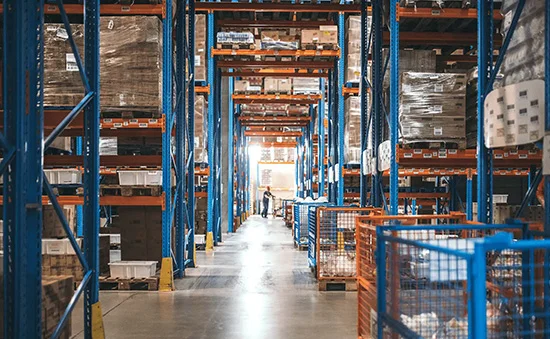Navigating the Future: The Most Sustainable Methods for Transporting Goods
In an era where environmental concerns are at the forefront of global discourse, the logistics and transportation sectors are under increasing pressure to adopt sustainable practices. As businesses strive to reduce their carbon footprints and enhance their corporate social responsibility, understanding the most sustainable ways to transport goods has become paramount. This article delves into the various methods of transportation, evaluates their environmental impacts, and highlights innovative solutions that can lead to a greener future.
The Environmental Impact of Transportation
Transportation is a significant contributor to greenhouse gas emissions, accounting for approximately 14% of global emissions according to the Intergovernmental Panel on Climate Change (IPCC). The methods of transporting goods—whether by road, rail, air, or sea—vary widely in their environmental impacts. Understanding these differences is crucial for businesses aiming to make informed decisions about their logistics strategies.
- Road Transportation: The Double-Edged Sword
Road transportation is one of the most common methods for moving goods, particularly for last-mile delivery. While it offers flexibility and speed, it is also one of the least sustainable options due to high emissions from fossil fuel consumption. However, advancements in electric vehicle (EV) technology are beginning to change the landscape. Companies like Tesla and Rivian are leading the charge in developing electric trucks that can significantly reduce emissions. Furthermore, optimizing delivery routes using AI and machine learning can enhance efficiency, reducing fuel consumption and emissions.
- Rail Transportation: The Green Giant
Rail transport is often heralded as one of the most sustainable methods for transporting goods over long distances. Trains can move a substantial amount of cargo with significantly lower emissions per ton-mile compared to trucks. The use of electric trains, particularly those powered by renewable energy sources, can further enhance sustainability. Innovations such as hydrogen fuel cells are also being explored as a means to power trains, potentially revolutionizing the rail industry. However, the effectiveness of rail transport is often limited by the availability of infrastructure and the need for intermodal connections.
- Maritime Transportation: The Backbone of Global Trade
Shipping by sea is responsible for moving approximately 90% of the world's goods. While maritime transport is generally more energy-efficient than road or air transport, it is not without its environmental challenges. The shipping industry is a significant source of sulfur oxides and other pollutants. However, the adoption of cleaner fuels, such as LNG (liquefied natural gas), and the implementation of regulations like the International Maritime Organization's (IMO) 2020 sulfur cap are steps toward reducing the environmental impact of shipping. Additionally, the development of wind-assisted propulsion technologies and electric vessels holds promise for a more sustainable maritime future.
- Air Transportation: The Fast Lane with a Heavy Toll
Air freight is the fastest method for transporting goods, but it comes with a hefty environmental price tag. Airplanes emit significantly more CO2 per ton-mile than other forms of transport. However, for perishable goods or high-value items, air transport remains a necessity. Innovations in sustainable aviation fuels (SAFs) and the development of electric and hybrid aircraft are critical areas of research aimed at reducing the carbon footprint of air freight. Companies like Boeing and Airbus are investing in these technologies, which could transform the air cargo industry in the coming years.
- Intermodal Transportation: The Best of All Worlds
Intermodal transportation, which combines multiple modes of transport, is increasingly recognized as a sustainable solution. By leveraging the strengths of different transportation methods, businesses can optimize their logistics while minimizing environmental impact. For example, goods can be transported by rail over long distances and then transferred to electric trucks for last-mile delivery. This approach not only reduces emissions but also enhances efficiency and reliability.
- The Role of Technology in Sustainable Transportation
Technology plays a pivotal role in enhancing the sustainability of transportation. Innovations such as blockchain for supply chain transparency, IoT for real-time tracking, and AI for route optimization are transforming logistics. These technologies can help businesses make data-driven decisions that reduce waste and improve efficiency. Moreover, the rise of e-commerce has led to increased demand for sustainable packaging solutions, further driving the need for eco-friendly transportation methods.
Conclusion: A Path Forward
As the world grapples with the challenges of climate change, the transportation sector must evolve to meet the demands of sustainability. While no single method of transporting goods is entirely without impact, a combination of strategies—ranging from adopting cleaner fuels and electric vehicles to optimizing logistics through technology—can pave the way for a more sustainable future. Businesses that prioritize sustainable transportation not only contribute to environmental preservation but also enhance their brand reputation and meet the growing consumer demand for eco-friendly practices.
In conclusion, the most sustainable way to transport goods lies in a multifaceted approach that embraces innovation, efficiency, and collaboration across the supply chain. By making informed choices and investing in sustainable technologies, businesses can lead the charge toward a greener, more sustainable future in logistics.




